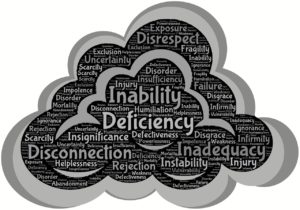
Fear evolved for humans as a protective means of preservation. It’s better to run and hide than presume a shadow is safe, only to be eaten by a lion 5 seconds later. But today, fear has become the dinosaur of traits that keep millions of people under its massive thumb, paralyzed to do and become what they could. Our gaze has shifted inward and has moved away from survival. Our battle is to defeat fear, to subdue it, lessen its impact.
Neuropsychologist Theo Tsaousides says in Psychology Today that, “when the fear is overwhelming, you experience fright: You neither fight nor flee; in fact, you do nothing.” The fear response can be somewhat trigger-happy, and it cuts like a knife.
Muscles tighten, including the base of each hair creating goosebumps. Our adrenal gland is given a nudge. Epinephrine is squirted into the bloodstream. The body releases cortisol bringing about the rise in blood pressure, blood sugar, and white blood cells. The cortisol turns fatty acids into energy. The prefrontal cortex assesses the threat. We determine whether the fear response is real and justified or if we are overreacting.
1 in 5 people are affected by fear disorders; that’s about 40 million adults. Anxiety disorders are the most common mental illness in the U.S. Fear and anxiety sit in modern society’s driver’s seat. It extends beyond logical worry in an unreasonable, unwarranted, uncontrollable way. Of course, some fear warrants concern, but the fear I speak of is the imaginary dark cloud that overshadows and subdues. A phobia, if you will, a disorder.
Medical professionals class phobias as anxiety disorders. People with such a disorder act irrationally and fear something that, most often, cannot cause harm. They, however, expect to see their trigger, even if not particularly likely to appear. The expectation boosts the fear response when they do come across their phobic object.
Individuals with a phobia will be well aware that their response to the object they fear is irrational. The brain has muted the rational areas, and the emotional ones are allowed to play their hand.
Anxiety can escalate into becoming what is known as GAD (Generalized Anxiety Disorder). When the emotional trigger produces disproportionate levels of distress, worry, or fear, the medical community calls this a disorder.
Factors contributing to this behavior include the following:
Symptoms doctors look for are the following:
To receive a GAD diagnosis, a person must:
The above factors are severe enough to interfere with daily living.
Consider this . . . “I have a list of possible problems in my head. If all the real problems are solved, I turn another one into a problem so that I can worry about it. These are constant facts of life. It is not increasing. It has always been like this.”
We’ve developed fears, a list of which is a mile long.

Fear of:
What do all of these fears have in common? Fear of losing something or the fear of not being accepted by others.
“Think about all that you are instead of all that you are not.” – Unknown
Experts have written volumes about such fears. We know a lot about them, but how do we defeat fear; this mighty foe?
“The reason we struggle with insecurity is because we compare our behind-the-scenes with everyone else’s highlight reel.” – Steve Furtick
“We are still afraid; we’ve just become comfortable living with it. We’ve managed to develop fear for non-immediate danger.” Jason points out instead of letting the fear hide, acknowledge its existence. Suppressing these fears isn’t healthy. Don’t run. Feel your fear. Become friends with it. If you try to dismiss it or kick fear out, it will come roaring back. Instead, accept that it’s coming along for the ride, a sort of harmonious discord.
“Freedom is on the other side of the wall of fear. So when we feel fear, it’s actually a signal that we should go toward the fear.” — Leo Babauta
In the movie We Bought a Zoo, Matt Damon is talking to his son about girls. He tells him:
“You know, sometimes all you need is twenty seconds of insane courage. Just literally, 20 seconds of just embarrassing bravery. And I promise you, something great will come of it.”
Therefore, stand your ground and show twenty seconds of enormous courage. All of us have said to ourselves a time or two, “why didn’t I say (or do) something?” Practice makes perfect. By doing so you’ll get tougher. You’re always going to feel fear, but practice is what makes the difference in the battle to defeat fear.
Start small. Get used to bringing your fear to the surface. Facing your fear and proceeding onward will shut down the initial fear of taking action. You’ll move forward. Never stop. Persistence is the key to success in almost anything in life. Continuously facing fears is vital and should be done every day. Show up. Push yourself to keep going. Once you learn how to live harmoniously with your fear, you’re in for a fantastic ride.
Every entrepreneur has had to face and overcome their fears. They are still doing this each day. The fear is there, but they have learned how to handle it.
Overcoming fear in business never ends! Our pursuit to defeat fear doesn’t stop!
Finally, consider fear as a sign that we’re outside of our comfort zones, but as we’ve all heard, that’s where the magic happens. ?
In Part 2, I will discuss more tactics to defeat fear in more detail. Stay tuned.
Add your email address to get our cashflow kit and unlock cash hidden in your business.
Buried in a pile of receipts? Numbers out of date – or worse, books an out of control mess?
Dexter Balance, the number-crunching alter ego of Busitown superhero, Captain Balance, is here to save the day.
Want to find out more?